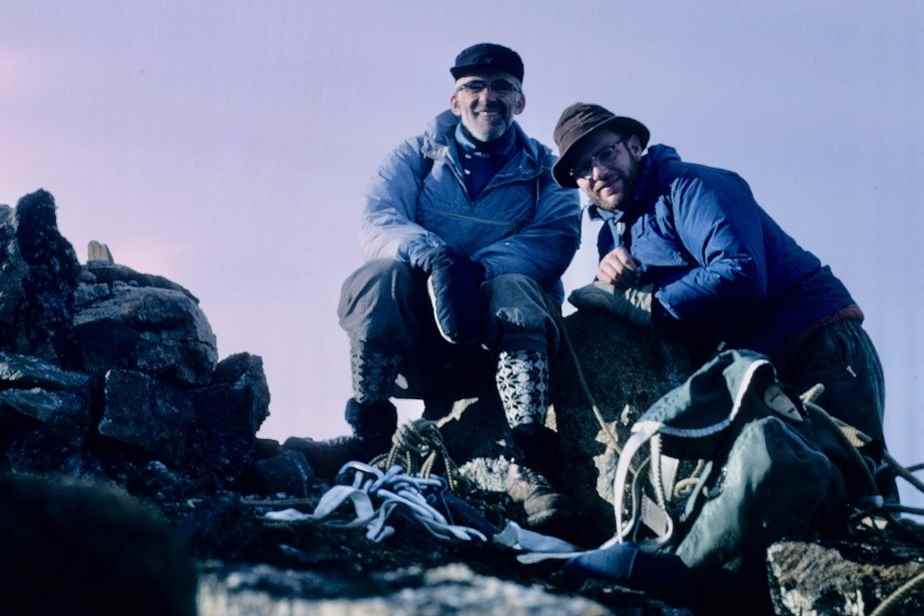It is not yesterday that we look at a mountain, that we admire its lines and that we really want to climb it. It is therefore fascinating to realize that this old man met in a park on the South Shore, quick-witted, but with slower movements than before, is one of our mountaineering pioneers.
Posted at 11:30 a.m.
Now 89, Donald C. Morton still vividly remembers that spectacular peak, Mount Thor, seen during an expedition organized by McGill professor Pat Baird and the Alpine Club of Canada to Baffin Island. , in August 1963.
“Teams of climbers who had been there a few years earlier had mentioned other peaks, such as Mount Asgard and Mount Odin, but hadn’t alluded to this one,” Morton said. Being a rock climbing enthusiast, I wanted to tackle it. »
He immediately made a first reconnaissance, but he had to wait for another expedition of the Alpine Club of Canada, in 1965, to reach the summit of Mount Thor in the company of his department head at Princeton University, Lyman Spitzer.
This is the most memorable memory of Don Morton’s entire mountaineering career.

PHOTO MARTIN CHAMBERLAND, THE PRESS
At 89, Don Morton continues to closely follow the adventures of today’s mountaineers.
I may have been the first to realize that was something very special. There is the highest vertical wall in the world, with 1250 m, overhanging. It’s spectacular. The fact of having identified it, of having named it and of having made the first ascent of it, is something!
Don Morton, on Mount Thor
He points out that the painter AY Jackson, one of the founding members of the Group of Seven, was part of the 1965 expedition. At the end of the camp, we had a small exhibition of what he had done. Decidedly, it was a remarkable expedition. »
Continents and Equipment
Don Morton has climbed on every continent (except Antarctica, he laments), including several first ascents in Canada and Peru. And all this, leading a brilliant career as an astrophysicist. He was notably director of the Anglo-Australian Telescope, in the Australian province of New South Wales.
He took advantage of his travels between Australia and the United Kingdom, and of the conferences in which he took part in the world, to fit in mountaineering expeditions. “I always added my mountaineering equipment to my luggage. »

PHOTO PROVIDED BY DON MORTON
In 1969, on the summit of Mount Cook, the helmet was used more and protection against the sun was essential.
Over the years, he has seen the equipment modernized. Fortunately, at the time, dynamic nylon strings were already in use. “It was an important progress because they had elasticity during falls. »
Aluminum carabiners were beginning to appear. “I had a few steel carabiners…they were really heavy to drag around. »
Crampons with front spikes also made their appearance. “That also made a big difference. »
Helmets were then only used for really dangerous places. However, removable protections, such as jammers, only came later. It was therefore necessary to use pitons, which were hammered into the rock. “A well-placed piton did not damage the rock. It was when trying to remove it that there was damage. This is why I am in favor of the idea of using jammers. »

PHOTO PROVIDED BY DON MORTON
Don Morton storming Mount Asgard in 1963
A dangerous game
For Don Morton, there is a clear link between mountaineering and astronomy.
“I’ve always had the desire to explore. »
He is still active in the field and co-authored a scientific paper in 2020. However, he had to put mountaineering aside, although at 84 he was still hiking to the tops of Adirondack mountains.
The new generations are doing fantastic things, they are pushing the limits.
Don Morton
“When I was young, the north face of the Eiger was the ultimate challenge,” he adds. Now some are doing it solo. But still, once in a while, someone gets hurt. It’s still a dangerous game. »
This is how he does not consider the fact that he had to turn back during certain ascents, in particular Mount Everest, as a failure. “I still consider these expeditions successful because I am still here, alive. »
Suggested video
When Cubs speak out
The Voyageurs World Project in Minnesota has compiled early Cub howls. Watch out, it’s too cute.
digit of the week
599
This is the number of kilometers of the George River canoe route in Nunavik, between its source at Lac Juillet and the village of Kangiqsualujjuaq.

